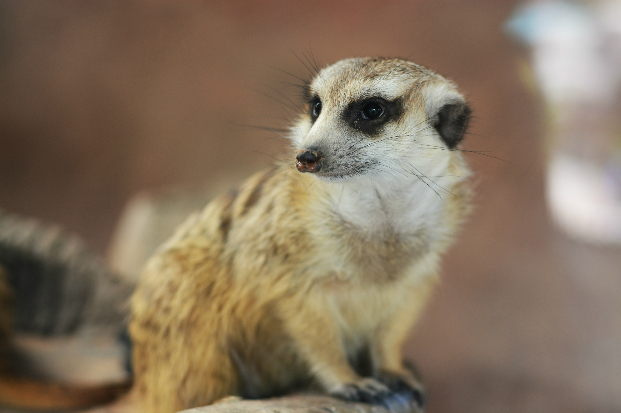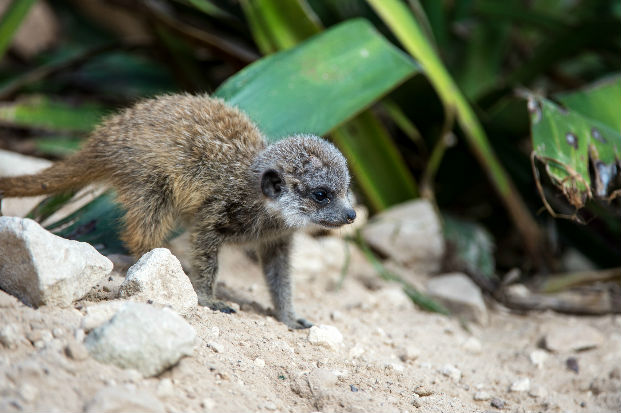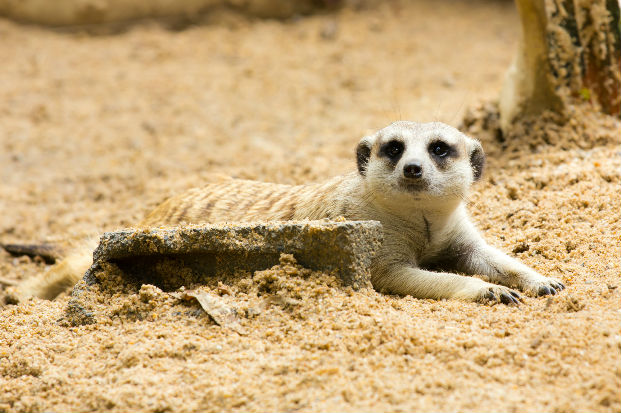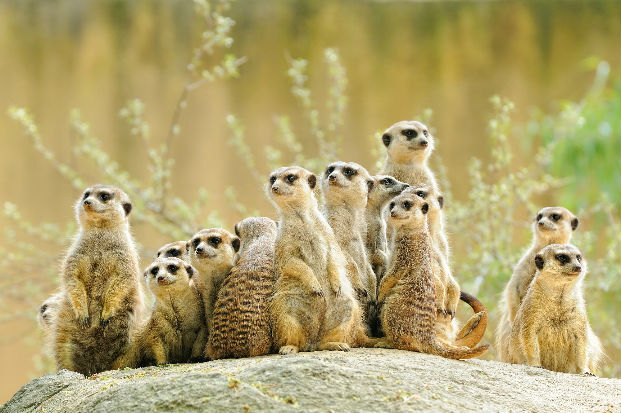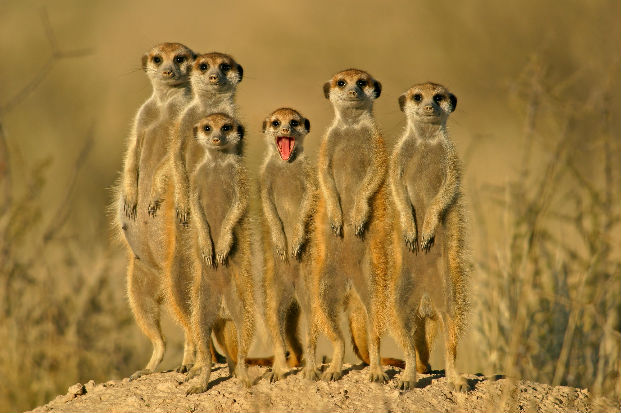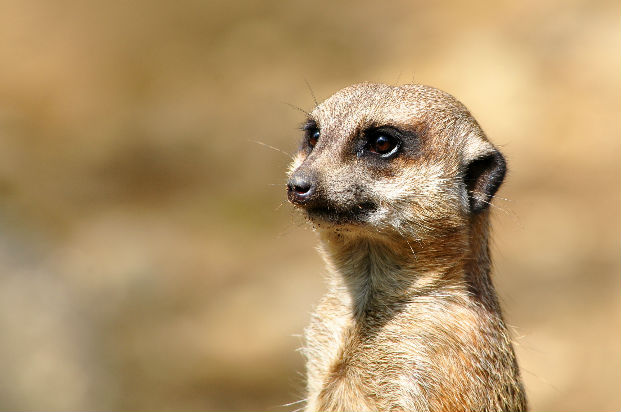The meerkat belongs to the mongoose family, Herpestidae. In total there are 13 species of mongoose living in southern Africa. The meerkat itself is renowned for its distinctive upright stance. The squirrel sized mammal has a long body, pointed muzzle, flat ears and black patches around its eyes. When walking or running they are lifted high off the ground by their long legs. They prefer dry open spaces with short grasses and scrubby woodland. Meerkats mainly eat insects and other arthropods including scorpions.
Vote for the fact you find most fascinating
Meerkats are territorial. They will mark the area around their burrows with faeces and anal gland secretions. Borders with other groups of meerkats are marked with a shared latrine.
Meerkats are only active by day. Each morning when they surface from their burrows. Here they will sunbathe and groom for 30 minutes or so before leaving to forage.
Meerkat pups are taught what to eat by others in the group. They will be brought back live prey and taught how to kill it.
Meerkats appear to be immune to the venomous sting of scorpions. However, to play it safe a mother will remove the scorpion sting before feeding the invertebrate to her young.
Meerkats are very sociable animals. Several families may join together to live as one large mob (group) of up to 50.
Meerkats will chase off jackals by joining together. The dominant male leads the charge of one tight mass of meerkats which advance with a bouncy gait. This gives the illusion that they are one large animal.
All members of the meerkat family will take it in turns to act as baby sitters for the young. They may do this for 2 to 3 days, during which time they will not be able to forage for food.
Meerkats post sentries to keep any eye out for danger. Each posting lasts about 1 hour and is usually undertaken by the best foragers. During the watch the sentinel emits a continuous all clear call.


